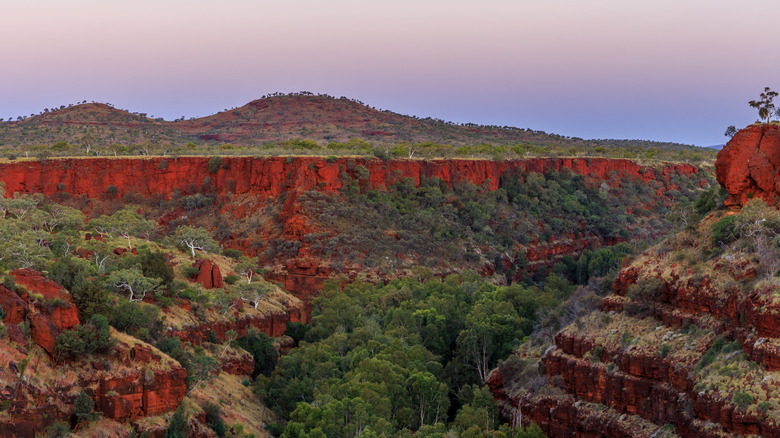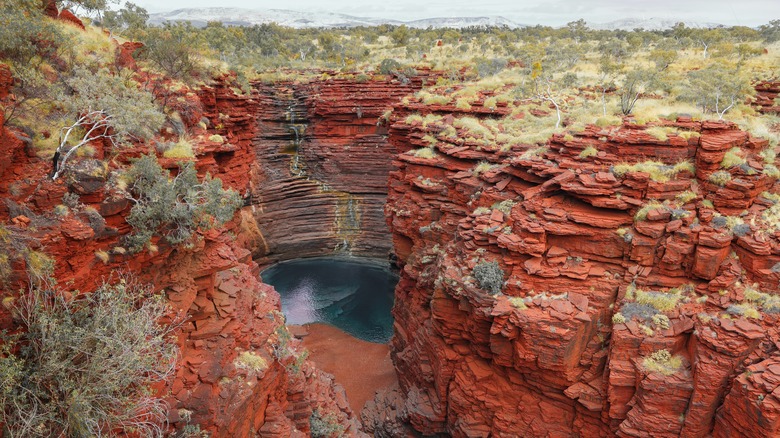Is This Australian Region The Oldest Place On Earth?
The Earth is really old. 4.54 billion years old (plus or minus 50 million), to be exact. Yet the rocky surfaces that make up Earth's landmasses can vary greatly in age. While some of these landmasses formed several billion years ago, others coagulated from molten magma within the past 100 million years. Iceland, for example, began forming from volcanic activity only 70 million years ago, per San Francisco's Exploratorium museum (via Live Science). Smaller islands continue to form to this day.
Geologically speaking, one of the oldest places on Earth is the Pilbara — a large region in northwestern Australia. Despite the Pilbara's size — it's around twice the area of Great Britain, per the BBC — the arid region only has about 61,000 inhabitants. The BBC reports that the Pilbara first began forming over 3.6 billion years ago, and segments of its iron-rich stone serve as "the best-preserved example of the world's most ancient crust." While other iron-rich areas as old as the Pilbara are now buried or radically geologically altered, the Pilbara's most ancient rocky formations are largely unchanged by time.
Such ancient stone must be the source of some pretty cool fossils, right? Well... sorta. As the Smithsonian writes, the oldest known lifeforms on Earth were microbes that emerged some 3.7 billion years ago — slightly before the geological formation of the Pilbara. Microscopic lifeforms like these rarely left behind direct fossils. Yet the Pilbara is home to fossilized evidence that these microbes existed.
The Pilbara is home to ancient rocks, ancient fossils, and ancient cultures
As the BBC reports, 3.45-billion-year-old "stromatolites" were discovered in the Pilbara in 1980. Per the National Park Service, stromatolites are layered fossils produced by Earth's ancient cyanobacteria. As these bacteria photosynthesized, they changed the acidity of the surrounding water, leading to a buildup of calcium carbonate in layered, sticky mats. These mats eventually hardened into fossils, though the bacteria themselves did not. Thus, the Pilbara's stromatolites serve as an important tool for researchers to study some of Earth's earliest lifeforms.
The Pilbara is obviously an awesome destination for geologists due to the sheer age of its rock samples. But, if that wasn't enough, the Pilbara gave researchers another gift. Per the BBC, the arid, desert-like environment of the Pilbara is spotted by lakes carved deep into the rock. In addition to being beautiful, these deep waterholes expose the many layers of the Pilbara's stone, giving geologists easy access to billions of years of history.
Plus, the Pilbara is ancient in a different sense; it's home to one of Earth's oldest continuous cultures. Per the BBC, the Pilbara is primarily inhabited by Aboriginal Australians — the Banjima people in particular. Certain areas of the Pilbara have served as important meeting places for Australia's indigenous people for 30 to 40 thousand years, and remain that way today. The Pilbara is also home to many rock carvings made by Aboriginal Australians thousands of years ago; some depict ancient mammals that have since gone extinct.

